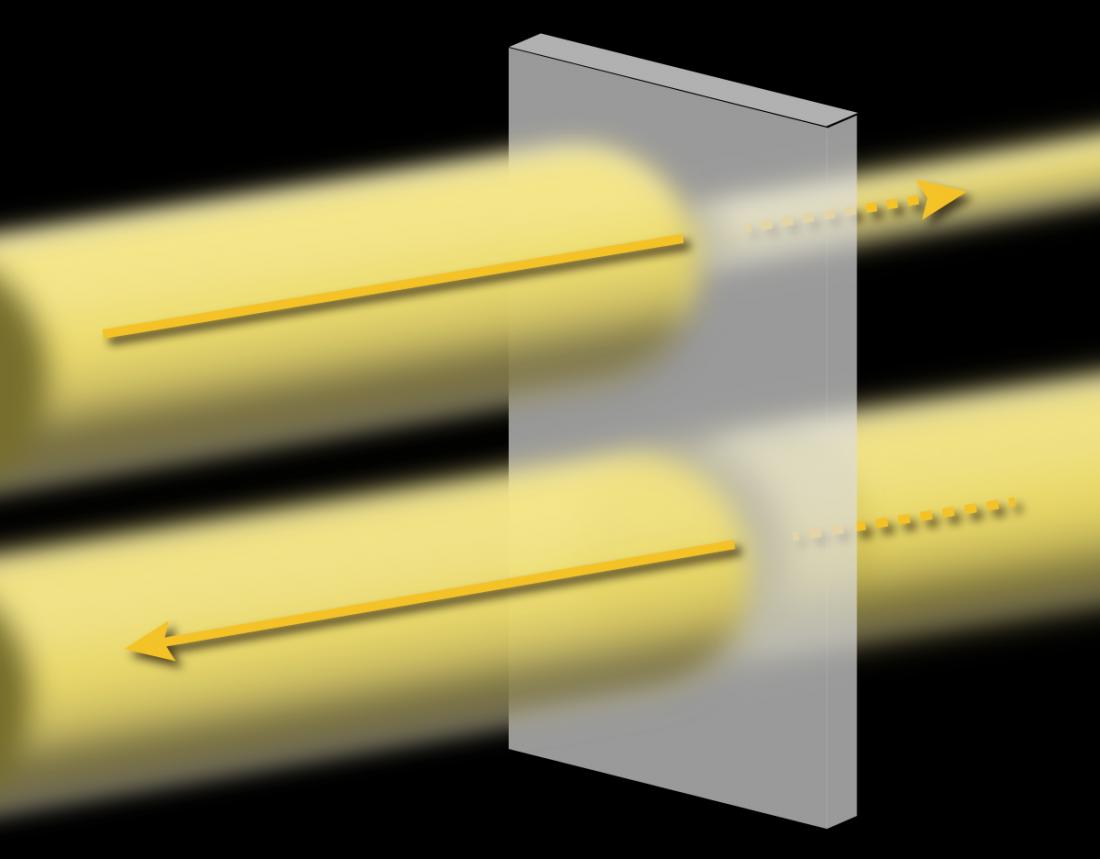The arrows indicate the direction in which the light travels, and the size of the cylinder indicates the intensity of the light. The intensity of light transmitted through a magnetic material (the gray plate) changes when the direction of light travel is reversed
Osaka, Japan – At the heart of global internet connectivity, optical communications form an indispensable foundation. Key to this foundation are optical isolators, created by combining multiple components. The result is a complex structure that transmits light in only one direction, to prevent damage to lasers and minimize noise by avoiding the reversal of light. However, some magnetic materials have an optical diode effect – an unconventional nonreciprocal absorption of light manifested by the material itself. This effect leads to a change in transmittance depending on the direction in which the light travels. If this phenomenon can be enhanced, it is expected that optical isolators can be made more compact and efficient.
A team of researchers led by Associate Professor Kenta Kimura of the Graduate School of Engineering at Osaka Metropolitan University investigated the phenomenon of nonreciprocal optical absorption in the magnetoelectric antiferromagnet LiNiPO4 at shortwave infrared wavelengths. Their results showed that the absorption coefficient differs by a factor of two or more when the direction of light propagation is reversed. This large nonreciprocal absorption is attributed to the magnetic properties of the divalent nickel (Ni2+) ions. Furthermore, the researchers have shown that it is possible to switch the optical diode effect with an applied magnetic field in a non-volatile manner.
“The optical diode effect is an interesting subject of study because it is such an unconventional phenomenon that is far removed from common sense and has the potential to realize unexpected applications. However, there are still many problems at present, such as the low operating temperatures,” explained Professor Kenta Kimura. “Nevertheless, this research has demonstrated the usefulness of compounds containing nickel, which has greatly expanded the scope of material selection. Based on this knowledge, we will continue the development of materials exhibiting a higher performance optical diode effect.”
Their findings were published in Physical Review Letters.
###
About OMU
Osaka Metropolitan University is the third largest public university in Japan, formed by a merger between Osaka City University and Osaka Prefecture University in 2022. OMU upholds "Convergence of Knowledge" through 11 undergraduate schools, a college, and 15 graduate schools. For more research news visit https://www.omu.ac.jp/en/ or follow us on Twitter: @OsakaMetUniv_en, or Facebook.



